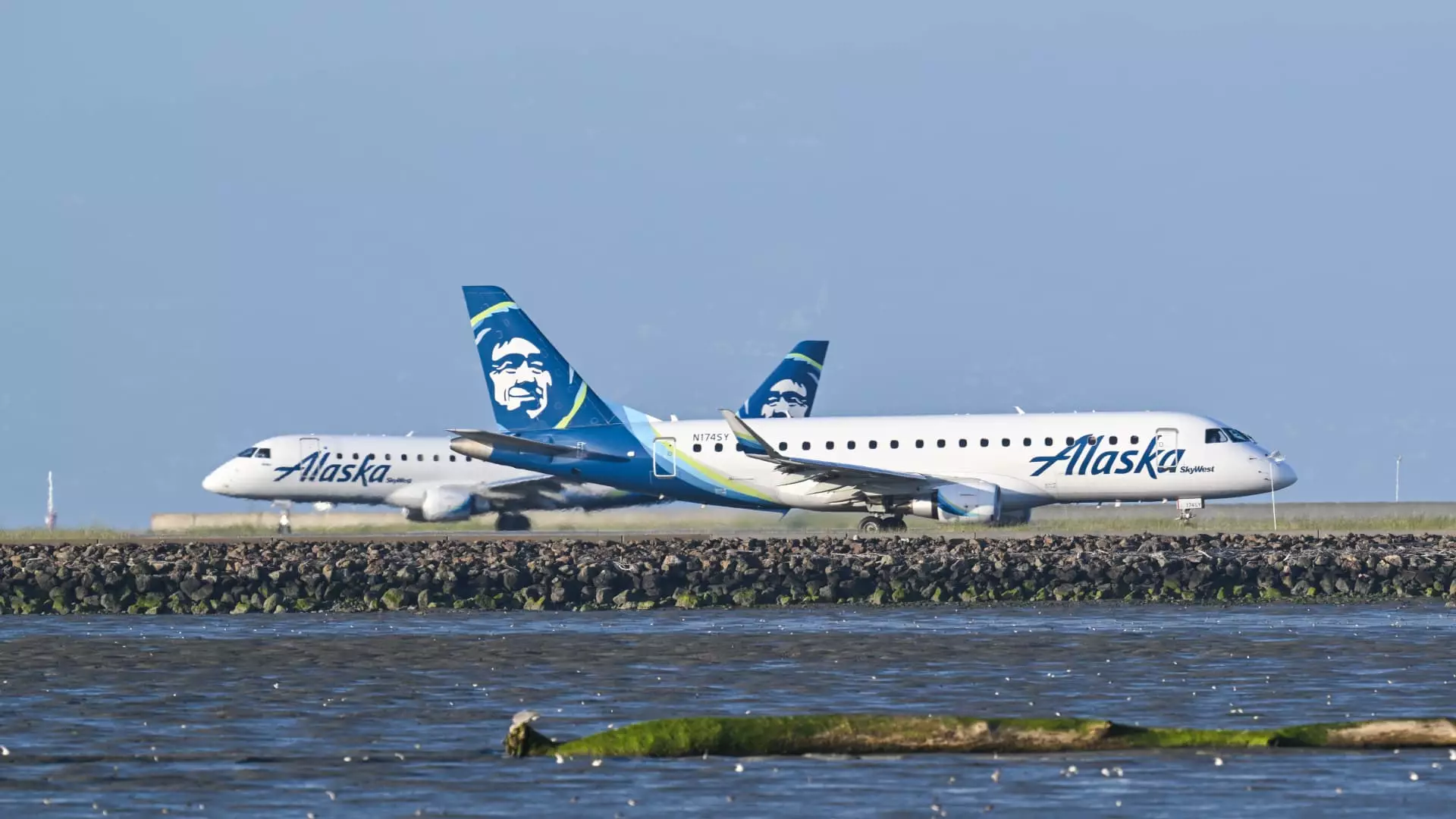Alaska Air Group has laid out an ambitious plan to increase its profits by an impressive $1 billion by 2027. This strategic vision aligns with a notable trend in the aviation sector towards high-end travel, which is gaining traction beyond the ordinary market dynamics. The airline’s growth trajectory is expected to flourish amid an environment that increasingly favors premium offerings, particularly as consumer habits evolve towards prioritizing comfort and exclusivity when it comes to travel.
The recent $1.9 billion acquisition of Hawaiian Airlines positions Alaska favorably in this competitive landscape. The integration provides enhanced access to international routes across the Pacific, significantly elevating Alaska’s operational capabilities. This strategic move aims at maximizing market reach while offering consumers connections to distant destinations while still operating under separate brand identities. As Alaska aims to leverage Hawaiian Airlines’ wide-body aircraft such as the Boeing 787 Dreamliner, it can effectively compete in the premium travel sector.
A major facet of Alaska’s growth strategy involves the introduction of new international routes. Anticipated nonstop services from Seattle-Tacoma International Airport to Tokyo’s Narita International Airport, and later to Incheon International Airport in Seoul, Korea, mark significant milestones for the airline. The service to Tokyo will utilize Hawaiian’s Airbus A330-200s, showcasing a commitment to expand its international footprint and cater to rising demand in high-end travel.
As flights become available for booking, Alaska’s forward-looking vision incorporates plans for at least a dozen international destinations by 2030. These plans underscore the airline’s commitment to enhancing its global presence while tapping into untapped travel markets. The projected operational scale necessitates a robust foreign market strategy coupled with careful route management to cater to evolving customer preferences.
The ongoing strategies include targeting robust pretax margins projected between 11% and 13% by 2027, alongside an optimistic forecast for per-share earnings exceeding $10. Expectations for 2024 earnings are similarly positive, estimated between $3.50 and $4.50 per share, integrating contributions from Hawaiian Airlines. This ambitious financial outlook is indicative of Alaska’s hands-on approach to improving profitability while navigating the complexities of market demands.
A critical element in Alaska’s growth could be the introduction of a new premium credit card through collaboration with Bank of America. This initiative is not merely a revenue-generating scheme; it represents a thoughtful approach to harness loyalty and retain customers outside of flying seasons. The co-branding strategy signals a pivot to diverse income streams, ensuring that financial health does not solely rely on ticket sales.
Alaska’s proactive adjustments in premium seat offerings have become a focal point in addressing shifts in consumer demand. The observation that more travelers are purchasing premium options outright, as opposed to relying on free upgrades, reflects a larger tendency among air travelers seeking comfort. Chief Financial Officer Shane Tackett highlighted this shift, stating that a large portion of revenue growth in recent years stemmed from premium services, establishing a clear pathway for further enhancement of first-class and premium economy offerings.
Interestingly, these changes indicate a competitive landscape where both Alaska and its Seattle rival, Delta Air Lines, recognize evolving customer preferences. While Alaska retains a dominant domestic market share at 55%, Delta seems to capitalise on a larger international passenger base, illustrating a critical area for Alaska to focus on in its growth strategy.
As Alaska embarks on this ambitious trajectory, it also faces operational hurdles. Recent challenges with Boeing—including production slowdowns and quality control issues—highlight the complexities of scaling operations within the aviation industry. Notably, the incident involving a pressure door plug on a new Boeing 737 Max 9 raised pressing concerns about manufacturing quality. Tackett expressed optimism that Boeing was working steadfastly towards resolving these issues; however, he acknowledged that steadfast commitment to quality would take precedence over output rates.
Moreover, upcoming updates regarding aircraft orders and deliveries from Boeing must be monitored closely, particularly reflecting workforce disruptions stemming from significant labor strikes. Alaska’s ability to navigate these operational challenges will be vital in ensuring the successful execution of its strategic expansion.
Alaska Air Group stands at the cusp of a transformative era fueled by strategic acquisitions, targeted international expansions, and heightened focus on premium travel options. While navigating challenges presented by operational constraints, Alaska remains optimistic about its growth potential within the high-end travel market. How well it executes this multifaceted strategy will ultimately dictate its success in the years leading up to 2027 and beyond.

